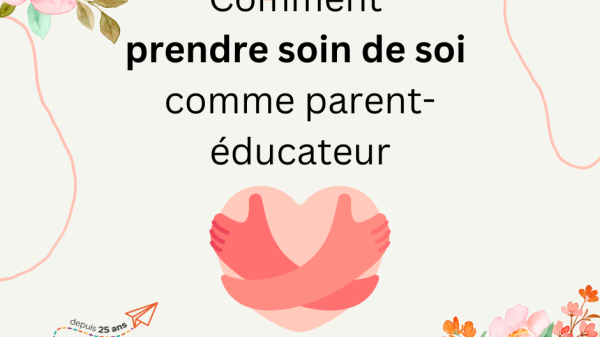Katherine’s lessons : 3 – the annual evaluation

Note: Before reading this text, please take the time to read lessons 1 (writen notice) and 2 (learning project). You will find the necessary information on your rights to homeschool.
After sending your written notice of homeschooling and your learning project, you may be wondering about the different methods offered regarding the annual evaluation.
In your learning project, you’ve indicated the assessment method for your child’s progress that you thought you would use at the end of the year. In a homeschooling context, there’s no need for exams in order for the child to attain the next schooling level. Working beside the child during the entire year generally allows the parent to see what is understood and what is not.
However, the ministry requires a yearly evaluation as proof that the child is receiving the minimal required. Know that there are different ways than exams to achieve this.
I will not lay out the 5 possible methods, as they are thoroughly explained on this AQED page. It describes, among other things, the costs to foresee or not, depending on your chosen method. Above factual criteria, is one choice better than another?
Thoughts for reflection
In-school exams
School exams could constrain the child to follow the school curriculum, perhaps even the Progression of learning, more than necessary. Furthermore, using school workbooks would be highly recommended to have the vocabulary used in school and have more chances of succeeding. It is not mandatory and doesn’t guarantee success, but it eases the comprehension of the function of the exam to allow a better chance at it.
Children who attend school receive an exam readiness trial. Teachers elaborate their own exams or have access to ministry exams in advance and prepare their students depending on the way the question is formulated. Students also practice these techniques throughout the year. In the case of homeschooling, we don’t necessarily use the same problem-solving techniques or precisely the same vocabulary to apply notions. We are parents guiding our children with our words and our daily activities. It doesn’t mean our children don’t acquire knowledge, but they do so in different circumstances and with different wording. Small details can stress out the child who doesn’t understand the vocabulary in the exam even when he/she masters the subject; which could lead to inequities in the correction and possible failure of the exam. It is possible for the child to participate in the exam preparation in class, although it is fairly complicated to figure out an arrangement with the school and they could even ask the child to attend class for 2 to 3 weeks at the end of the school year.
The exam passing requirements can be a source of anxiety for homeschoolers. They don’t always have access to empty quiet classrooms where they can work and easily concentrate. They can be among unknown students and confronted to unusual noises (at home, there aren’t 25 kids blowing their noses, sharpening their pencils, dropping a sheet of paper, asking a question, clicking their tongue… there can be a little sister singing Frozen loudly, but that is normal to them). A new setting, new smells, a stressful situation (because even for students, exams are anxiety-provoking) – many reasons that could impair the success of our children.
We could think these are excuses, because we are afraid of our children taking these exams and failing. Yet, this isn’t the case or, in many cases, only partly. Homeschooling is a way of life in itself. I know everything my child has learned since birth. I know how he/she learned it and I know, because he/she told me, how he/she integrated it. I don’t need an exam in artificial conditions to prove it. A defeat in these artificial conditions could undermine our children’s self esteem when they progressed sufficiently and have acquired knowledge in a satisfactory manner.
Studies on learning evaluations are eye-opening about end of year exams. The way they are administered (where you have to assimilate knowledge and spill it on a sheet of paper in one sitting, forgetting about it afterwards) isn’t an efficient way to evaluate the integration of knowledge. When you have a classroom of 25 students, it is an easy method to verify knowledge retention in a group. However, it is not an efficient nor adequate way to do so for the child himself. It is a static photograph, punctual to a rich learning experience, which, if taken at a bad time (cold, allergy, menstruation, difficult night, etc) can lead to a failed examination. Therefore, for our homeschooled children, for whom we choose an alternative way of learning, we often prefer to choose an alternative way of assessment.
Portfolio
A portfolio is an interesting alternative method. It allows the child to sift through a binder of the memories made throughout the year. From one year to another, he can review his progress, the evolution of his hand-writing, his capacity to overcome obstacles, etc. It is kind of like his yearbook. It is even more rewarding when the child can tell the evaluator himself, putting his successes and difficulties in context, demonstrating knowledge integration by laughing at a photograph and by recalling anecdotes of a visit to the museum.
Unfortunately, it is sometimes used to test a child out of context by asking him/her to recite by heart certain elements taken casually from project examples. If the evaluator pays attention to the child rather than his/her checklist, he/she will notice the quality and the sum of the knowledge retained by the child. The portfolio can be a wonderful tool, depending on the use.
Often, in homeschooling context, it is sent by email or by mail and the evaluator looks it over without context, without seeing this “yearbook” as a whole, seeing it as small snippets on paper. It doesn’t do justice to the various skills learned.
The portfolio also requires a lot of investment by the parent. Indeed, the parent must document the skills learned throughout the year with photos, examples of activities, tying in with the education program, etc. in order to have, at the end of the year, a thoroughly detailed document to prove that the basic passing requirements are met.
Evaluation by a teacher
Assessment by a teacher (licensed and qualified) is another possibility. The parent makes an agreement with the teacher and the evaluation can be done several ways, depending on the participants. It is possible to show this person a portfolio, to ask him/her to administer exams or to review the workbooks and work done by the child during the year. The evaluation aims to make everyone comfortable.
A teacher normally knows by instinct the necessary requirements to pursue schooling and to go up a level. He/she can spot what the child masters and what will give him a hard time in the next level. The evaluator can observe and give advice on future orientation of learning. He/she knows the educational program well enough to make connections between it and the skills learned at home.
Some teachers have homeschooled before or continue to homeschool and therefore have a very good reading of home learning. They know the lifestyle, the rhythm and the environment specific to homeschooling.
The teacher’s assessment is, however, the option that is most expensive for the parent. It brings to mind whether the time to put together the portfolio or to drive the child to school for exams and the cost of this option would tip the scale or not.
A personal choice
I have overlooked the different evaluation methods and… I think you can easily guess my choice! I am too lazy to assemble a portfolio and too scientifically opposed to exams.
However, all these options are good, and as there are as many homeschooling adventures as homeschooling families, I think you should do your own pros and cons list of available options. Don’t forget to read the AQED page which explains the different possibilities. Maybe this will take you to another reading on evaluations than what I have presented here.
Changing evaluation method
Know that it is possible, during the year, to change the method of evaluation that you have indicated in the learning project. You are simply required to inform the ministry.
It is also possible to mention your hesitance to choose one option and to indicate that the method will be chosen during the year. The assessment is at the end of the year, thus you have time to see how things go before officially deciding.
Next lesson, we will tackle the sacrosanct socialization, since we simply must get to it…
The opinions expressed in this article are those of the authors and should not be interpreted as reflecting the position of AQED.



